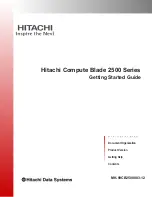
Specifications and requirements
20
Gasoline Filtration
Yamaha outboard motors are equipped with
internal fuel filters. However, excessive water
or debris entering your engine’s fuel system
could prematurely clog the internal filters,
causing starting and running problems, fuel
system damage, and internal engine dam-
age. Therefore, it is recommended that an ex-
ternal 10-micron water-separating fuel filter
be installed on your boat and serviced fre-
quently. Consult your authorized Yamaha
dealer for a 10-micron filter that meets your
engine’s requirements.
EMU41342
Gasoline Additives
Gasoline blends change to meet automobile
emission regulations and economic condi-
tions. Additives, added by gasoline distribu-
tors, necessary for proper automobile engine
operation and durability, may not be suffi-
cient for typical boat applications. Intake
valve and combustion chamber deposits
may accumulate in boat engines more rapidly
than encountered in automotive use. In addi-
tion, gasoline used for boating will typically
age longer between refills than gasoline used
in automobiles, resulting in stale and unus-
able gasoline that may cause starting and
running problems, fuel system damage, and
internal engine damage.
Yamaha recommends the use of two Yama-
lube gasoline additives to reduce internal de-
posits and extend the storage life of gasoline.
Continuous use of Yamalube Ring Free Fuel
Additive Plus reduces harmful internal de-
posits. Yamalube Fuel Stabilizer & Condition-
er Plus added to fresh gasoline will help
protect the fuel system from varnishing while
helping to keep the gasoline’s octane level
from decreasing excessively during storage.
Other additives may also be available on the
market that may have varying degrees of ef-
fectiveness. Consult your Yamaha dealer
concerning what may work best for the local-
ly available gasoline and environmental con-
ditions.
EMU41352
Anti-fouling paint
A clean hull is required to maintain your
boat’s performance. Boats moored in the wa-
ter should be protected from marine growth
(barnacles, mussels, and marine plants). If
approved by regulations for your area, the
bottom of the hull can be coated with an anti-
fouling paint to inhibit marine growth.
Anti-fouling paints specifically formulated for
use on aluminum may be applied to the out-
board motor. The original Yamaha paint sur-
face may be scuffed lightly before applying
anti-fouling paint, but do not remove the orig-
inal paint. Removal of the original paint will in-
crease the rate of corrosion.
NOTICE
ECM02411
Anti-fouling paint for fiberglass and wood
may contain materials, such as copper,
graphite, and tin, that can cause corrosion
if applied to aluminum boats and outboard
motor components. Never apply these
types of paint to your outboard motor be-
cause rapid corrosion damage could oc-
cur.
Sacrificial anodes are attached to the out-
board motor to provide corrosion protection
and must never be painted.
Sacrificial anodes made from a different ma-
terial may be necessary for maximum corro-
sion protection due to your local water
conditions. Please consult your Yamaha
dealer.
U6EK30E0.book Page 20 Wednesday, January 29, 2014 4:03 PM














































